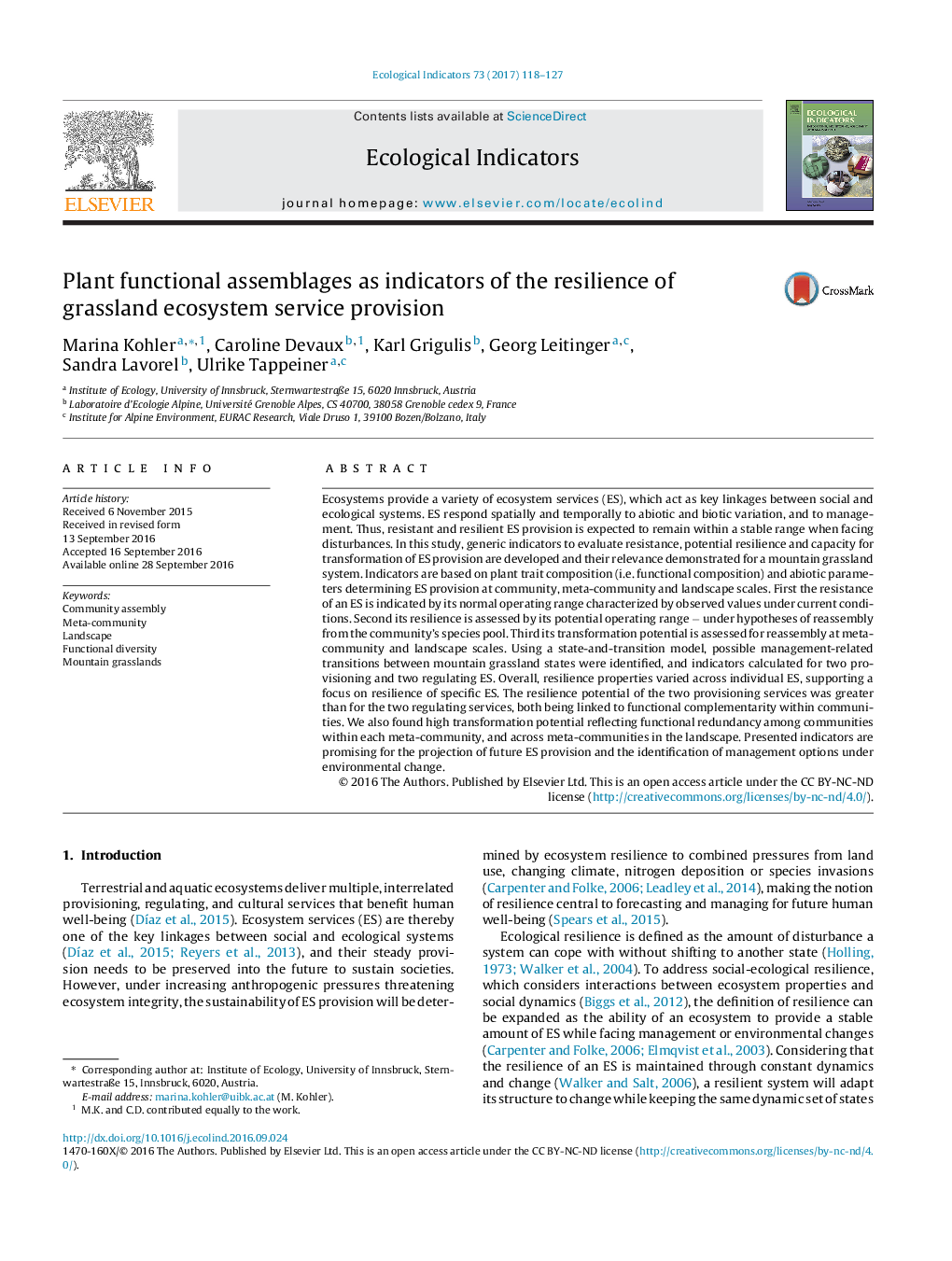| Article ID | Journal | Published Year | Pages | File Type |
|---|---|---|---|---|
| 6292539 | Ecological Indicators | 2017 | 10 Pages |
â¢Indicators based on functional traits to evaluate the resistance and resilience of ecosystem service provision are proposed.â¢Indicators of specific resilience focus on individual ecosystem services reflecting specific determining ecosystem structures and processes.â¢Application of indicators to four ecosystem services in differently managed grasslands.
Ecosystems provide a variety of ecosystem services (ES), which act as key linkages between social and ecological systems. ES respond spatially and temporally to abiotic and biotic variation, and to management. Thus, resistant and resilient ES provision is expected to remain within a stable range when facing disturbances. In this study, generic indicators to evaluate resistance, potential resilience and capacity for transformation of ES provision are developed and their relevance demonstrated for a mountain grassland system. Indicators are based on plant trait composition (i.e. functional composition) and abiotic parameters determining ES provision at community, meta-community and landscape scales. First the resistance of an ES is indicated by its normal operating range characterized by observed values under current conditions. Second its resilience is assessed by its potential operating range â under hypotheses of reassembly from the community's species pool. Third its transformation potential is assessed for reassembly at meta-community and landscape scales. Using a state-and-transition model, possible management-related transitions between mountain grassland states were identified, and indicators calculated for two provisioning and two regulating ES. Overall, resilience properties varied across individual ES, supporting a focus on resilience of specific ES. The resilience potential of the two provisioning services was greater than for the two regulating services, both being linked to functional complementarity within communities. We also found high transformation potential reflecting functional redundancy among communities within each meta-community, and across meta-communities in the landscape. Presented indicators are promising for the projection of future ES provision and the identification of management options under environmental change.
